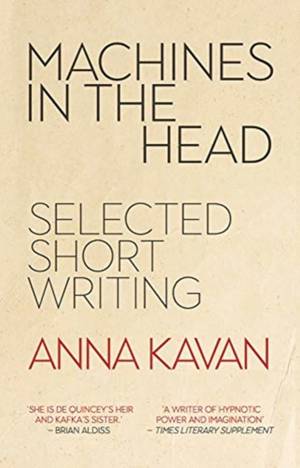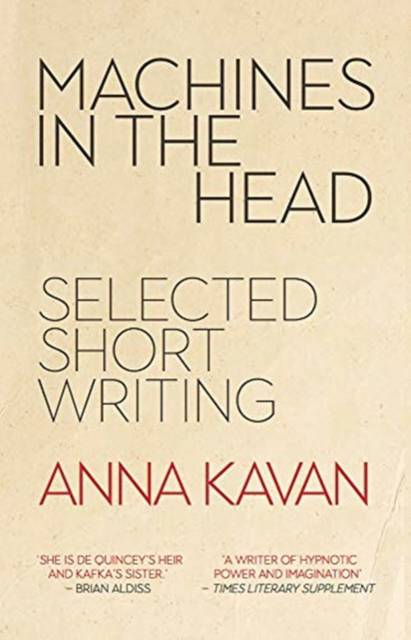
- Retrait gratuit dans votre magasin Club
- 7.000.000 titres dans notre catalogue
- Payer en toute sécurité
- Toujours un magasin près de chez vous
- Retrait gratuit dans votre magasin Club
- 7.000.0000 titres dans notre catalogue
- Payer en toute sécurité
- Toujours un magasin près de chez vous
23,95 €
+ 47 points
Format
Description
Described by Brian Aldiss as "De Quincey's heir and Kafka's sister," junkie, depressive, radical, enigma, cult figure, genre-bending experimental writer and artist--few women writers have gathered the same air of mystique, so often the preserve of male counter-culture figures, as Helen Woods, more commonly known by her adopted pen name and persona: Anna Kavan. This anthology of Anna Kavan's short fiction and journalism marks the 50 years since her death in 1968, offering an accessible introduction to readers new to her work and a timely survey of her diverse literary talents for her fans. From moving portraits of clinical depression to phantasmagoric visions of science-fiction wonder, the selection is taken from across Kavan's oeuvre, representing the best of her writing and showing the range of her style. Readers will encounter oblique and elegiac tales of breakdown and incarceration from Asylum Piece (1940), moving evocations of wartime from I Am Lazarus (1945), fantastic and surrealist pieces from A Bright Green Field (1958) and stories of heroin addiction from Julia and the Bazooka (1970). Her science-fiction stories will appeal to fans of her final novel Ice, while the previously unpublished 'Starting a Career' is a futuristic spy-thriller. Writing for the magazine Horizon between 1943 and 1946, Kavan revealed her personal and political views. She was pacifist, nihilist, atheist and vehemently anti-fascist; she implicitly believed in people's mutual responsibility for one another and was preoccupied with those who were dispossessed, marginalized or alone. Her book reviews reveal something of her literary tastes and influences as well as being a platform for her beliefs regarding psychology, ethics and the importance of art and literature in turbulent times. Machines in the Head shows the extraordinary range of Kavan's work, which is, by turns, moving, funny, bizarre, poignant, often unsettling but always distinctive and unique.
Spécifications
Parties prenantes
- Auteur(s) :
- Editeur:
Contenu
- Nombre de pages :
- 256
- Langue:
- Anglais
Caractéristiques
- EAN:
- 9780720620542
- Date de parution :
- 01-09-19
- Format:
- Livre relié
- Format numérique:
- Genaaid
- Dimensions :
- 140 mm x 216 mm
- Poids :
- 494 g

Les avis
Nous publions uniquement les avis qui respectent les conditions requises. Consultez nos conditions pour les avis.






